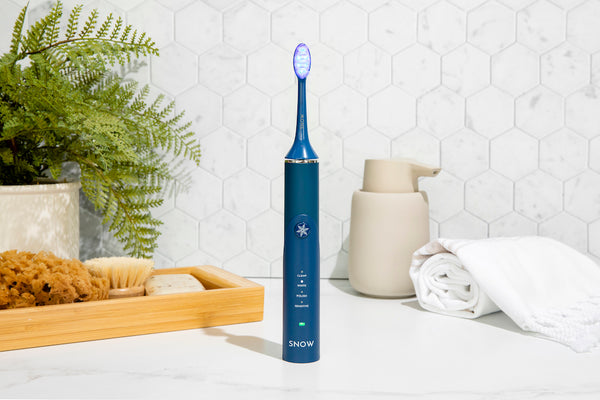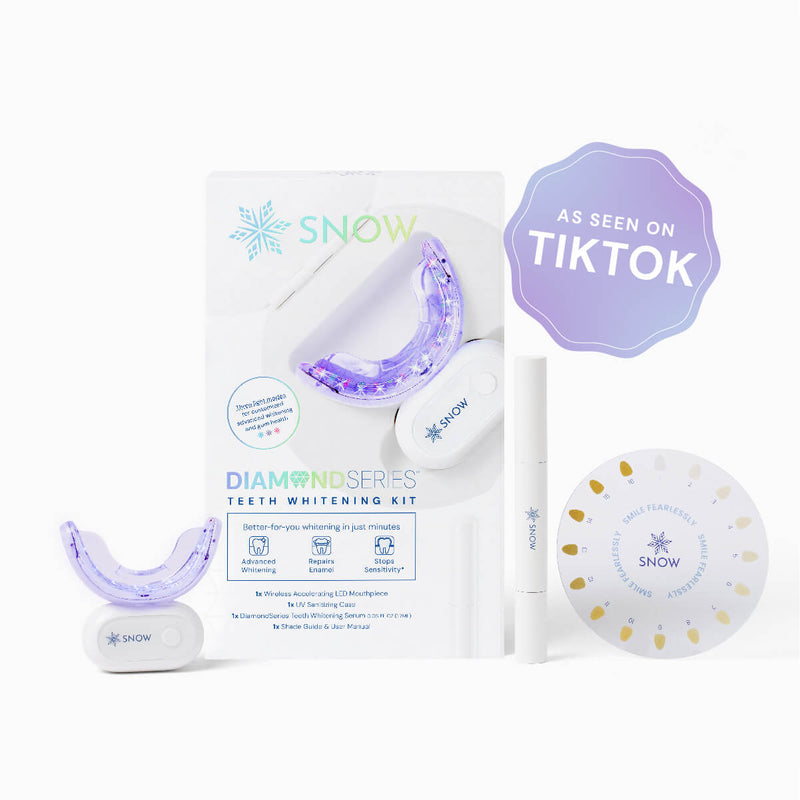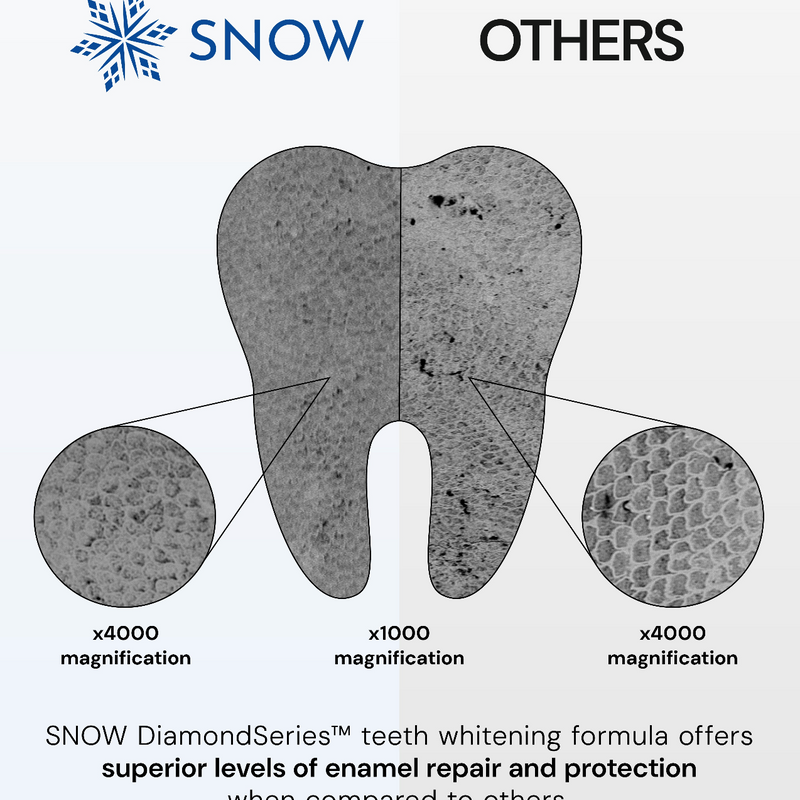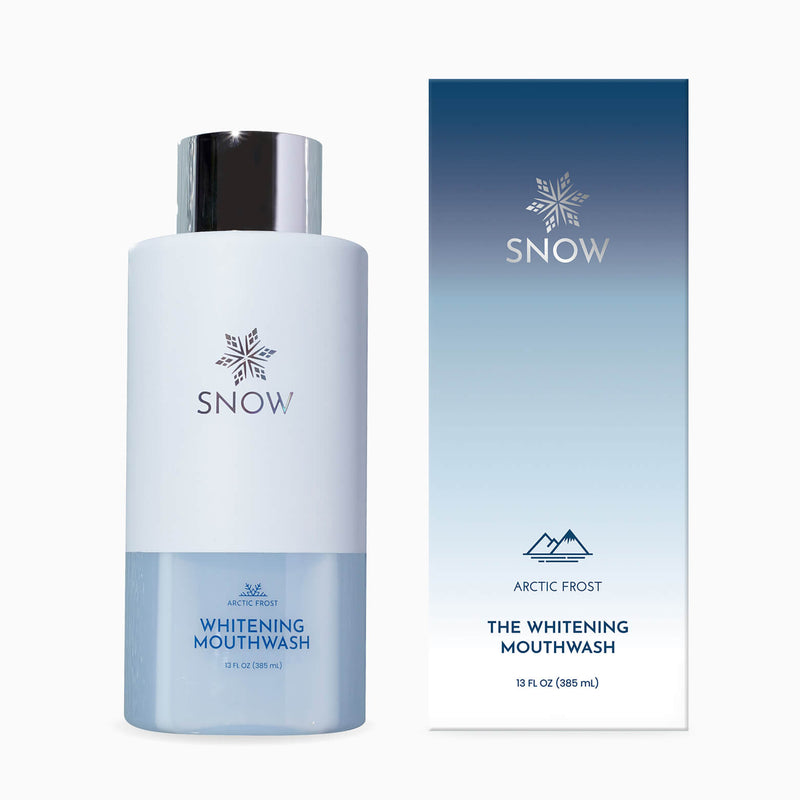Does peroxide kill COVID on toothbrush heads? Yes, it can. SNOW understands the importance of maintaining oral hygiene, especially during these uncertain times.
In this article, we'll delve into the efficacy of peroxide in killing COVID on toothbrushes.
We'll explore the science behind peroxide's disinfectant properties, providing insights from reputable sources.
Additionally, we'll discuss practical tips for safeguarding your toothbrush against COVID contamination and steps to properly disinfect it.
By the end of this article, you'll have a comprehensive understanding of how peroxide can effectively combat COVID on toothbrushes, empowering you to maintain optimal oral health with confidence.
What this article covers:- Does Hydrogen Peroxide Kill Bacteria and Viruses?
- Toothbrushes and Bacteria
- How Long Can COVID Stay on Toothbrushes?
- How to Pect Your Toothbrush From COVID-19?
- What's the Difference Between Rubbing Alcohol and Hydrogen Peroxide?
- How to Use Hydrogen Peroxide to Kill Germs
Does Hydrogen Peroxide Kill Bacteria and Viruses?
Yes, hydrogen peroxide is indeed effective against bacteria and viruses, including COVID-19.
SNOW prioritizes the safety and efficacy of dental hygiene products, which is why we advocate for the use of hydrogen peroxide in teeth whitening solutions.
According to Healthline, hydrogen peroxide is commonly used in teeth whitening products due to its ability to break down and remove surface stains.
Additionally, the CDC emphasizes the importance of proper toothbrush handling to prevent the spread of infections, highlighting the significance of using effective disinfectants like hydrogen peroxide.
By incorporating hydrogen peroxide into our teeth whitening formulas, SNOW ensures not only a brighter smile but also a hygienic oral care routine, promoting overall dental health and well-being.
Toothbrushes and Bacteria
Toothbrushes indeed serve as a breeding ground for bacteria, including potentially harmful strains.
SNOW emphasizes the importance of maintaining oral hygiene through regular cleaning and disinfection practices. We understand the significance of a clean toothbrush in preventing oral infections and promoting overall dental health.
According to the CDC, proper toothbrush handling involves rinsing the toothbrush thoroughly after each use, storing it in an upright position to air dry, and replacing it every three to four months or sooner if bristles become frayed.
SNOW's commitment to promoting dental health extends beyond teeth whitening to encompass all aspects of oral hygiene, including proper toothbrush care.
By adhering to recommended cleaning and disinfection practices, SNOW ensures that its users can maintain a healthy and bacteria-free oral environment, ultimately contributing to brighter smiles and enhanced well-being.

How Long Can COVID Stay on Toothbrushes?
COVID-19 can survive on toothbrushes, even high quality ones like our LED Teeth Whitening Electric Toothbrush, for varying durations, ranging from hours to days, depending on several factors such as environmental conditions and surface material.
SNOW recognizes the significance of this concern and advocates for stringent hygiene practices to mitigate the risk of viral transmission.
Ensuring proper toothbrush maintenance is crucial in minimizing the potential spread of COVID-19 and other pathogens.
SNOW recommends following these guidelines to maintain a clean toothbrush:
- Regular Cleaning: Thoroughly rinse your toothbrush with water after each use to remove any debris or toothpaste residue.
- Storage: Store your toothbrush in an upright position in a well-ventilated area to allow for air drying, as moisture can promote microbial growth.
- Replacement: Replace your toothbrush every three to four months or sooner if the bristles become frayed or worn, as worn-out bristles are less effective at cleaning and may harbor more bacteria.
By adhering to these practices, individuals can reduce the risk of contamination and maintain optimal oral hygiene, aligning with SNOW's commitment to promoting dental health among its users.
How to Protect Your Toothbrush From COVID-19?
To safeguard your whitening toothbrush from potential COVID-19 contamination, SNOW recommends the following preventive measures:
- Storage In A Clean, Dry Area: Store your toothbrush upright in a clean and dry location to prevent moisture buildup, which can foster bacterial growth and virus transmission.
- Avoid Contact With Contaminated Surfaces: Keep your toothbrush away from surfaces that may harbor viruses, such as countertops or shared bathroom spaces. Consider using a toothbrush holder to maintain hygiene.
- Regular Cleaning: Rinse your toothbrush thoroughly with water after each use to remove any residual toothpaste or debris. Additionally, consider disinfecting your toothbrush regularly with appropriate solutions to minimize the risk of viral transmission.
By adhering to these practices, individuals can effectively mitigate the potential risk of COVID-19 contamination to their toothbrushes, ensuring optimal oral hygiene and safety.
What's the Difference Between Rubbing Alcohol and Hydrogen Peroxide?
Rubbing alcohol and hydrogen peroxide serve as disinfectants, but they differ in composition and effectiveness.
Which One Is Better At Killing Germs?
Hydrogen peroxide demonstrates superior germ-killing abilities due to its broad-spectrum antimicrobial properties. SNOW recognizes hydrogen peroxide as a valuable component for maintaining dental hygiene.
What Germs Do They Kill?
Both rubbing alcohol and hydrogen peroxide are effective against bacteria and viruses. However, hydrogen peroxide has shown greater efficacy against certain pathogens, making it a preferred choice in dental care.
By prioritizing ingredients with proven antimicrobial properties, SNOW ensures the efficacy and safety of its dental products.

How to Use Hydrogen Peroxide to Kill Germs
Using hydrogen peroxide to eliminate germs from toothbrushes is a straightforward process that ensures optimal oral hygiene.
How To Soak the Brush Head
- Prepare the Solution: Mix hydrogen peroxide with water in a clean container. The recommended ratio is one part hydrogen peroxide to three parts water.
- Submerge the Brush Head: Immerse the bristles of the toothbrush in the diluted hydrogen peroxide solution.
- Soak Time: Allow the brush head to soak for at least 3-5 minutes to ensure thorough disinfection.
- Rinse Thoroughly: After soaking, rinse the toothbrush under running water to remove any residual hydrogen peroxide solution.
- Air Dry: Place the toothbrush in an upright position to air dry completely before next use.
SNOW emphasizes the importance of following these steps diligently to maintain a clean and germ-free toothbrush.
Conclusion
Having delved into the efficacy of hydrogen peroxide in eliminating strep bacteria from toothbrushes, it's evident that a diligent cleaning routine is paramount for oral health.
By following simple steps to incorporate hydrogen peroxide, one can ensure a germ-free environment for their dental tools.
Remember, maintaining a clean toothbrush is essential for overall dental hygiene. For those seeking comprehensive oral care solutions, explore SNOW's range of electric toothbrushes tailored for teeth whitening —enhance your dental routine today.
If you want to learn more, why not check out these related posts:
- How to Clean Toothbrush with Salt Water
- Can I Soak My Toothbrush in Hydrogen Peroxide
- Does Vinegar Kill Strep on Toothbrush
- Can You Disinfect a Toothbrush with Rubbing Alcohol
- Will Peroxide Kill Thrush on Toothbrush
- Best Electric Toothbrush
- Best Toothbrush for Veneers
- Best Toothbrush for Cavities
- Best Flossing Toothbrush
- Best Toothbrush to Remove Stains
- Best Biodegradable Toothbrush
- Best Toothbrush for Periodontitis
- Best Toothbrush for Wisdom Teeth
- Best Toothbrush for Receding Gums
- Best Toothbrush for Sensitive Gums























